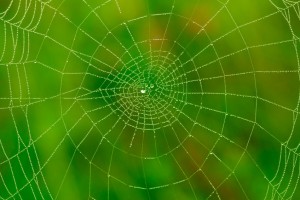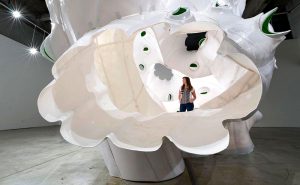Tag: biomimicry
November 22, 2016
Nature Does it Better: Biomimicry in Architecture and Engineering
by Zack Mortice The most important convergence of design and biological sciences today relies on “innovation” that’s millions, if not billions, of years old. Biomimicry is the imitation of the models, systems, and elements of nature for the purpose of solving complex human problems; biomimicry in architecture and manufacturing is the practice of designing buildings and products that simulate or co-opt processes that occur in nature. There are ultrastrong synthetic spider silks, adhesives modeled after gecko feet, and wind-turbine blades that mimic whale fins.“The way biological systems solve problems is pretty different from the way engineered systems solve problems,” says Peter Niewiarowski, biologist at the University of Akron and its Biomimicry Research and Innovation Center.
Human-designed solutions, he says, are crude and additive. They rely on using more materials or energy to accelerate reactions—both costly expenditures. Natural processes rely on unique geometry and material properties… Read more at RedshiftJuly 31, 2015
Biomimicry: Designs By Nature
by Lisa Bonanate Buildings designed like termite dens. Insulation made from mushrooms. Panes of glass structured like spider webs.
Mother Nature is the ultimate architect – one with a few billion years of experience. Her designs are efficient, innovative and conducive to sustaining life. Increasingly, mankind is looking to these time-tested engineering strategies to answer the sustainability issues we’re facing.
Biomimicry, meaning “to imitate life”, is a design discipline that looks to solve man-made sustainability challenges by emulating the most effective patterns and systems found in nature. Bio-inspired design is nothing new. As far back as the 15th century, Leonardo DaVinci based his flying machine on the anatomy of birds. But modern applications are reflecting exciting new innovations.
(more…)
Buildings designed like termite dens. Insulation made from mushrooms. Panes of glass structured like spider webs.
Mother Nature is the ultimate architect – one with a few billion years of experience. Her designs are efficient, innovative and conducive to sustaining life. Increasingly, mankind is looking to these time-tested engineering strategies to answer the sustainability issues we’re facing.
Biomimicry, meaning “to imitate life”, is a design discipline that looks to solve man-made sustainability challenges by emulating the most effective patterns and systems found in nature. Bio-inspired design is nothing new. As far back as the 15th century, Leonardo DaVinci based his flying machine on the anatomy of birds. But modern applications are reflecting exciting new innovations.
(more…)

